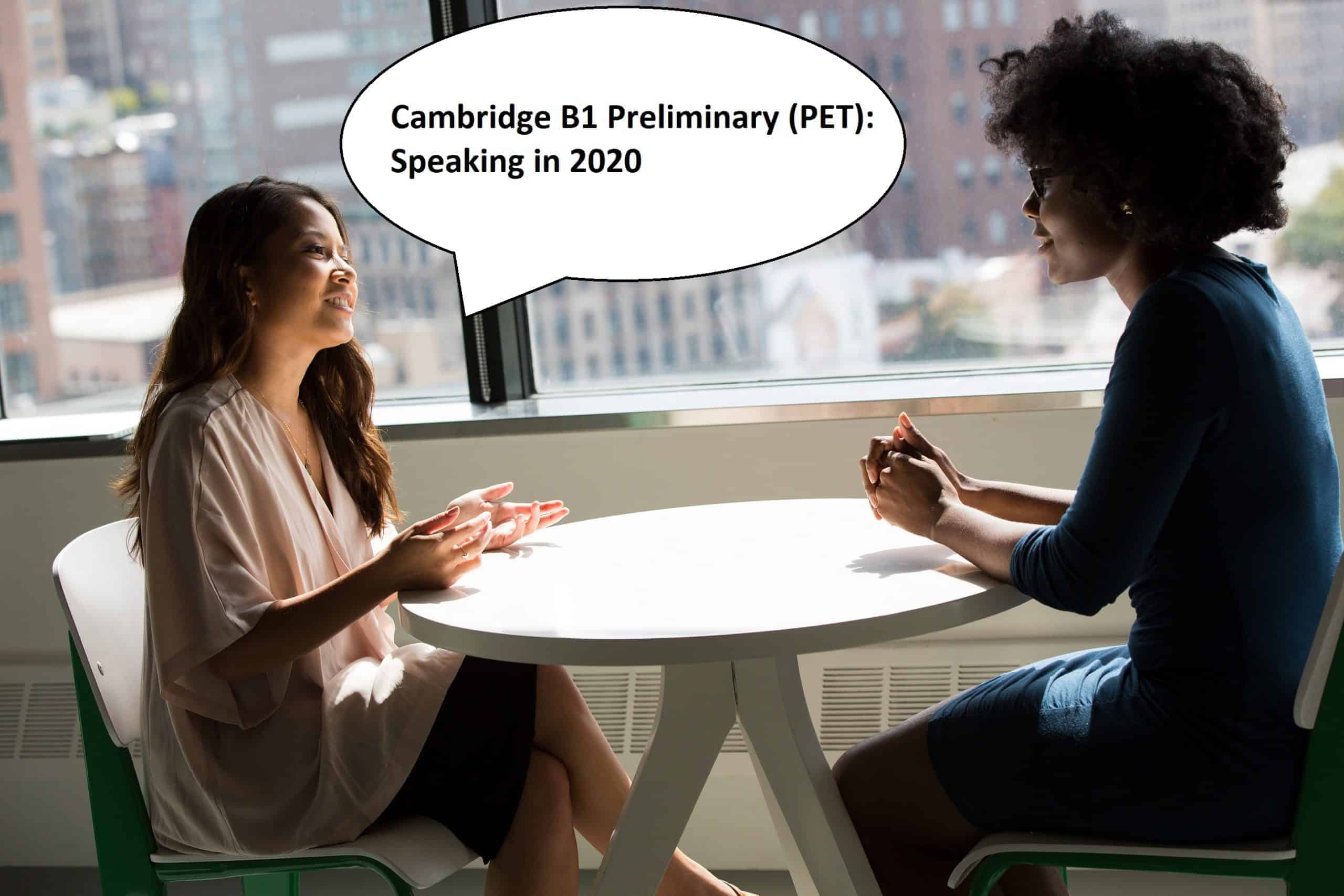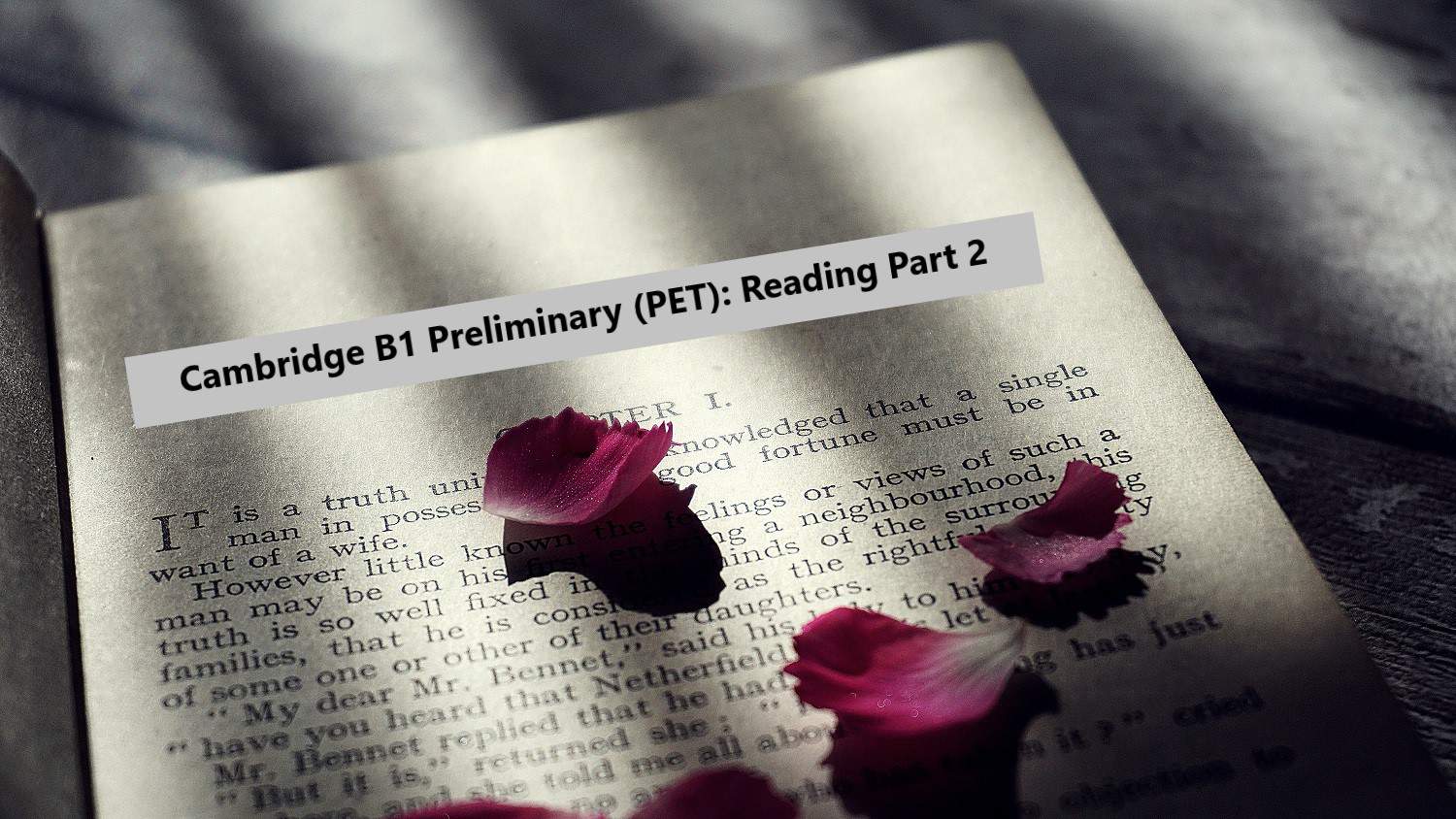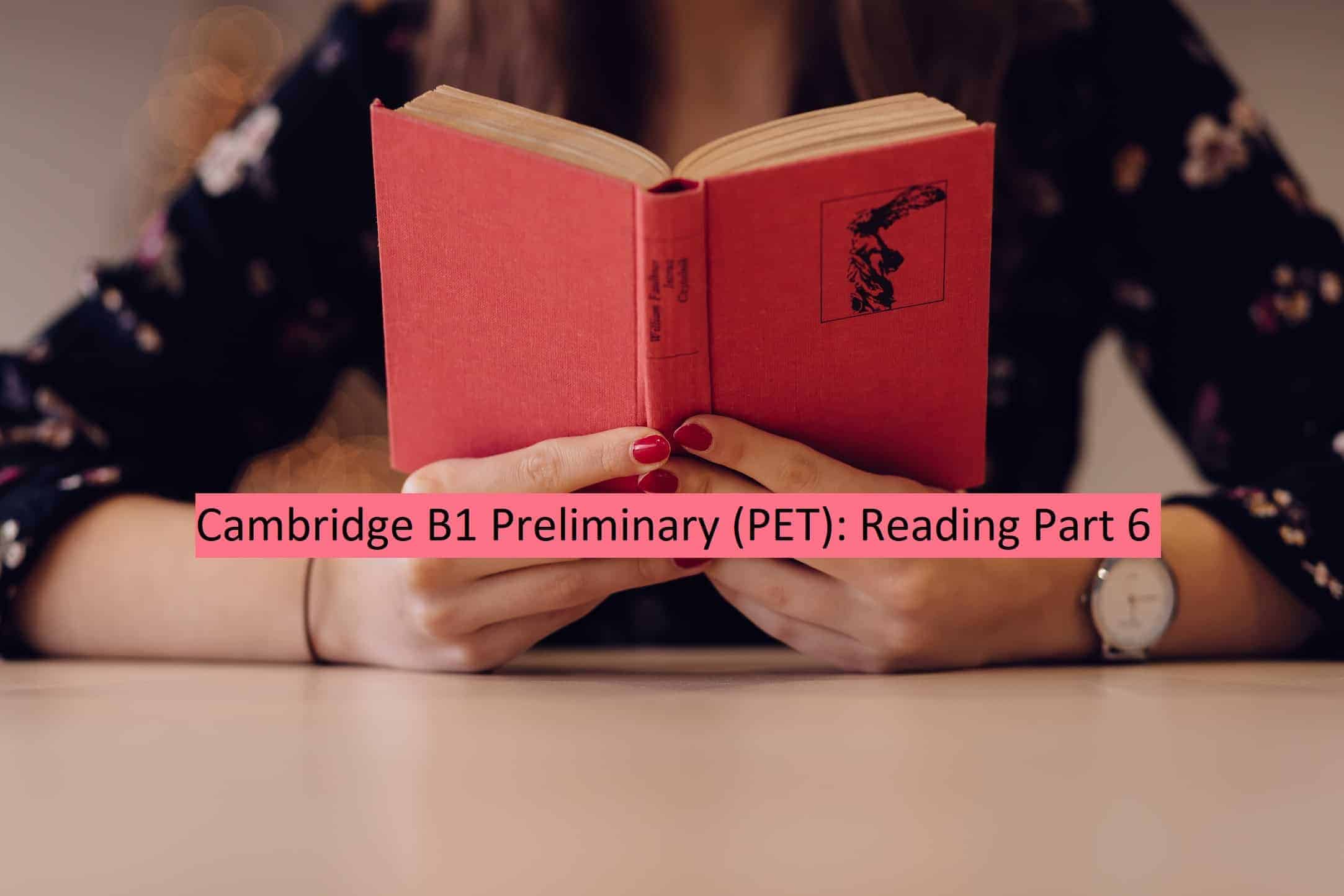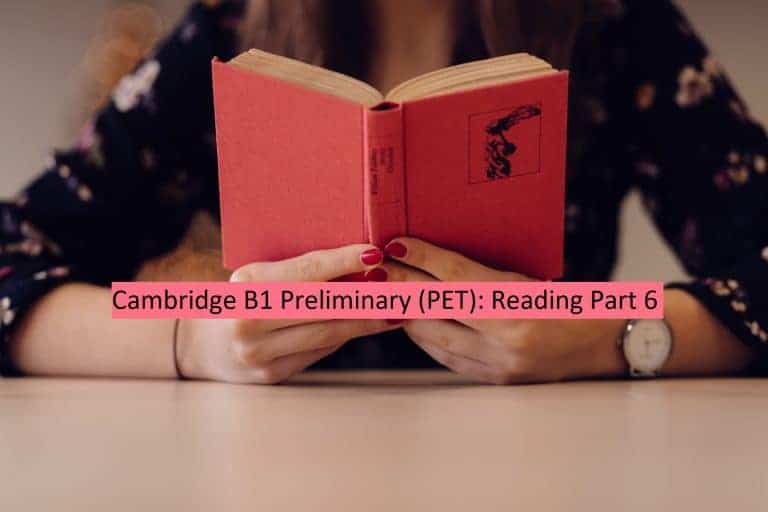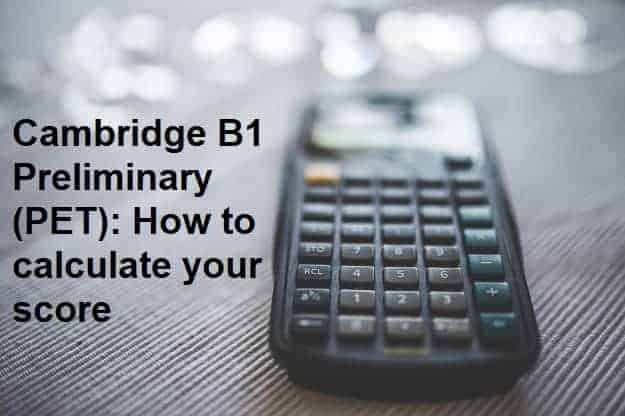Introduction
In 2020 Cambridge English updated the B1 Preliminary exam and there were a few changes to the Speaking paper so it is important for students and teachers to know what the ‘new’ Speaking exam looks like and what you can do to get ready and practise the right way.
The structure of the Speaking test still looks very similar to the old version, but, as I said before, there are a few changes.
- Introductory phase – The examiner asks each candidate a few personal questions. It’s like a warm-up.
- Individual long turn – Candidates need to describe a photo. This used to be Part 3, but now it is in line with higher-level exams like B2 First and C1 Advanced.
- Collaborative task – In this part the candidates work together and discuss a topic based on pictures which they get from the examiner. Until 2020 this was Part 2.
- Discussion – The examiner asks the candidates to discuss different questions which are linked to the topic in Part 3.
The different parts of the Speaking paper
Now that you know that there are four parts to the Speaking exam in PET it is time to look at them one by one. I’m going to show you how each section works based on an example video. We will look at the things the candidates do well and see what they could do better to get higher marks. Hopefully, you will understand the exam better and feel more confident once you get to the end of this article. 🙂
Part 1
In Part 1 of the B1 Preliminary Speaking test, the examiner asks the candidates some questions about their lives. There is a wide range of topics such as work/studies, family/friends, past/future activities, hobbies, your home, etc.
This section of the exam is like a warm-up or an introduction for you. The examiner tries to make you feel comfortable so you are not too nervous when you get to the following stages.
In the example video above you can see the two candidates doing Part 1. It only takes two minutes and the examiner asks them simple questions in turn. Both students do a good job because they give full answers adding some extra information like reasons or examples where they can. This is a very important point for you to remember as many candidates forget about this so their answers become very short and it doesn’t sound natural.
Another thing that many people often ignore is their body language. Try to smile when you are talking to the examiner or your partner, look at them when you or they are speaking and give them the impression that you are friendly, open and easy to talk to.
Part 2
We could say that Part 2 is where the exam really starts. Here you work on your own, which means you don’t interact with your partner, but you talk about a photo that the examiner gives you for about one minute. You have to describe the picture and tell the examiner what you can see.
I have seen many students preparing for the exam and there is a strategy that has worked best for most of them.
- Describe the person/people in the picture first (appearance, What are they doing?, possible feelings)
- Describe their surroundings (Where are they? What objects are around them? Are the people doing anything with the things around them?)
It is like going from the centre of the picture to the outside. You start with the people, who are usually in the middle of the image, and you move to the outside from there. This way you don’t forget any important details and if you get confused, you have something that can help you remember what to do next.
Example 1
In the video example, there are a few very interesting points to look at. Kenza goes first and I immediately notice that she doesn’t talk much about the woman’s appearance. She doesn’t speak about her clothes, her hair or body position. She could definitely improve that.
On the other hand, she speculates very nicely about what the woman might be doing in the photo. She uses words and expressions like “I don’t think…” or “Maybe…”. Also, her grammar is great using present continuous (am/are/is + -ing) to describe what is happening in the picture.
Unfortunately, she stops after just around 30 seconds when she could talk about a lot of other things and the examiner needs to help her a little bit. Don’t worry too much, this is OK and you won’t fail the exam just because of that, but it is better if you can talk for a full minute or until the examiner asks you to stop.
Once Kenza continues, she makes more good observations and keeps using nice grammar and vocabulary (“As I said before…”, revising, preparing, etc.)
Example 2
Mohammed does a very good job speaking for the full minute and he makes a lot of really good observations talking about the man, his phone, the guitar, his clothes and some other things as well. He mostly uses present continuous, just like Kenza, which is a very good thing to do too. Apart from that, Mohammed also speculates about the man possibly living alone because there is no one with him in the photo and there are no toys or any other signs of children.
The one thing, however, that Mohammed could improve is that there is no real structure in his turn. He jumps from one thing to the other instead of following a clear structure as I described above. To be clear, this doesn’t ruin his turn, but we can always work on little things in order to get even higher marks. Remember, describe the person first and then focus on the other things in the photo.
Part 3
Part 3 is the first task in which you communicate directly with your partner. The examiner gives you a situation and some pictures. Use these pictures to discuss the situation with your partner and make a decision based on the examiner’s instructions. You have 2-3 minutes of talking time and the examiner will stop you when the time is up. https://www.youtube.com/embed/wv_nEUnhFFE?&start=299&end=462
Kenza and Mohammed generally work well together. They take turns talking and both of them give their opinion clearly as well as react to what their partner says instead of simply trying to throw their own ideas out there. Also, they discuss the topic until the examiner stops them, which is another important point for you to keep in mind. Teamwork is really the most crucial point in Part 3 and you should practise how to interact well with your partner before you take the official exam.
Kenza could support her ideas a little bit more and her answers are sometimes slightly too short while Mohammed does a great job giving reasons and examples to express his opinions. The same is true for how they interact with each other with Mohammed being more inviting than Kenza asking her to give her thoughts on the different gift options the football club could give to its supporters.
Overall, both students do a solid job, but Mohammed shows better skills when it comes to interacting with Kenza so I would give him higher marks here.
Part 4
Last but not least, Part 4 marks the end of the Speaking paper in B1 Preliminary. Here, the examiner asks you and your partner to discuss different questions together for about three minutes. The topic is always connected to Part 3 so in our example it is all about sports. https://www.youtube.com/embed/wv_nEUnhFFE?start=462
In the video, you can see that from the beginning Kenza and Mohammed work well together again. They react to what their partner says and give their opinions based on that information.
Similarly to Part 3 Mohammed shows better overall language awareness, a wider range of vocabulary and grammar and better interactive communication even though Kenza shows that her speaking skills are quite good for this level as well using good grammar and vocabulary to answer the questions and to interact with Mohammed.
Useful language for the Speaking exam
In each part of the Speaking test in B1 Preliminary, there are some useful phrases that you should try to use in order to get higher marks. The examiners look for this type of language because it signals that you are talking in the correct way and that you know what the examiners expect from you.
In general, we can break up the Speaking exam in three groups when it comes to useful language: Part 1, Part 2, Parts 3+4.
Part 1
Part 1 is the warm-up to your examination so it is important that you get accustomed to saying full sentences and to linking your ideas with reasons, examples, results and contrasts. A great way to achieve this is to use different linking expressions that you already know so there is nothing new for you to learn. Just make sure that you put one or two of them in each answer in Part 1 and you will see that what you say immediately makes more sense.
Below you can find some examples and O believe that these are probably the most common examples to give reasons or examples and to express result or contrast.
| Useful language for Speaking Part 1 |
| Giving reason |
| because because of + -ing/noun since as |
| Giving examples |
| for example such as for instance like |
| Expressing a result/consequence |
| so to in order to for + -ing |
| Expressing contrast |
| but although even though however on the other hand |
Again, these are the most common expressions, but there are many more that you can find online or in a good grammar book.
Part 2
Part 2 is all about describing what you can see in a photo, which means that you need the right language to do exactly that. Apart from that, you should also speculate a little bit about the people’s feeling or what they might be doing.
| Useful language for Speaking Part 2 |
| Talking about different parts of the picture (prepositions) |
| on the right/left at the top/bottom in the top/bottom left/right corner in the centre in the foreground/background next to / near in front of / behind |
| Describing the people in the picture |
| He’s/She’s got long/short/dark/fair/brown/red/grey hair. He’s/She’s got blue/brown/green/grey eyes. He’s/She’s tall/short/slim/big. He’s/She’s wearing + clothes |
| Describing the actions in the picture |
| We always use the present continuous to describe what is happening in a photo. Example: He is watching TV. She is writing an email on her laptop. |
| Speculating about the things in the picture |
| maybe/perhaps He/She might be + -ing/adjective I think/believe that… It looks/seems like he/she is + -ing/adjective |
Parts 3 & 4
Lastly, we are going to look at the last two parts of the B1 Preliminary Speaking test. As described earlier in this article, it is important to interact well with your partner and you should give your opinion with reasons and examples. This last part about reasons and examples is very similar to Part 1 so I’m not going to repeat that, but let’s check how you can communicate effectively with your partner during Parts 3 and 4.
| Useful language for Speaking Parts 3 and 4 |
| Giving your opinion |
| In my opinion, … I think/believe/feel … For me, … I would say … |
| Agreeing/Disagreeing |
| I agree/disagree. I (don’t) think so. I see your point. Definitely/Absolutely! Yes, but … |
| Inviting your partner to speak |
| What do you think? What about you? And you? Do you agree? What is your opinion? |
Time to practise
I hope you were able to take away some useful tips for the B1 Preliminary Speaking exam from this article. There are many great resources online like the videos Cambridge English puts on YouTube so you can see what the test looks like and very often they add comments by the examiners in the description for you to understand even better what the candidates do well and what they could improve.
You now need to start practising. As soon as you know who your partner for the official exam is going to be, go through different exams with your teacher or, again, find them online. Try to put some of the useful language in your answers and see how easy it can be to improve quickly.
Lots of love,
Teacher Phill 🙂

